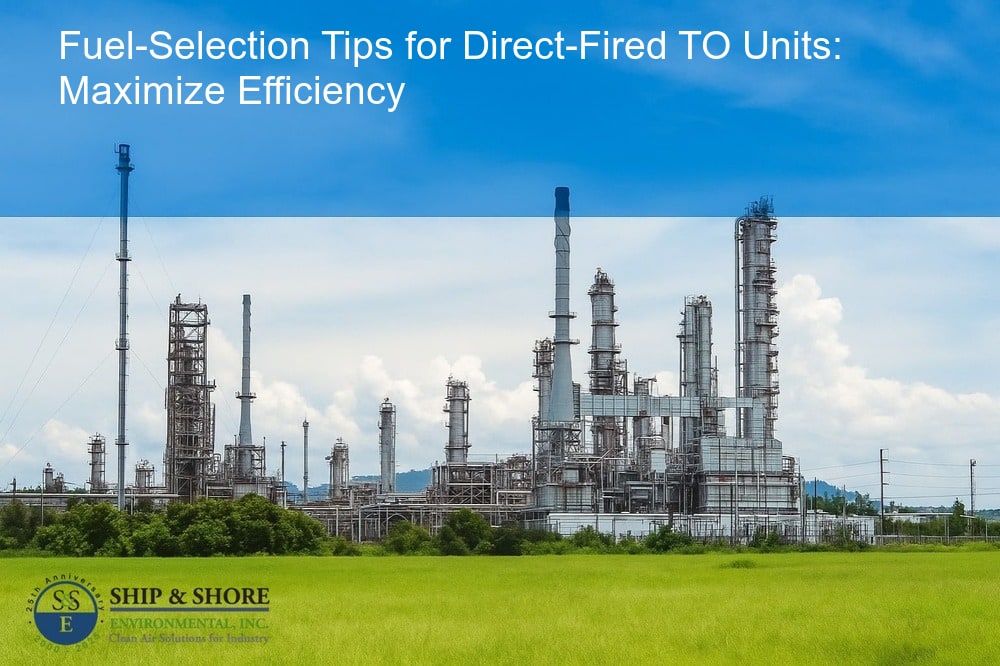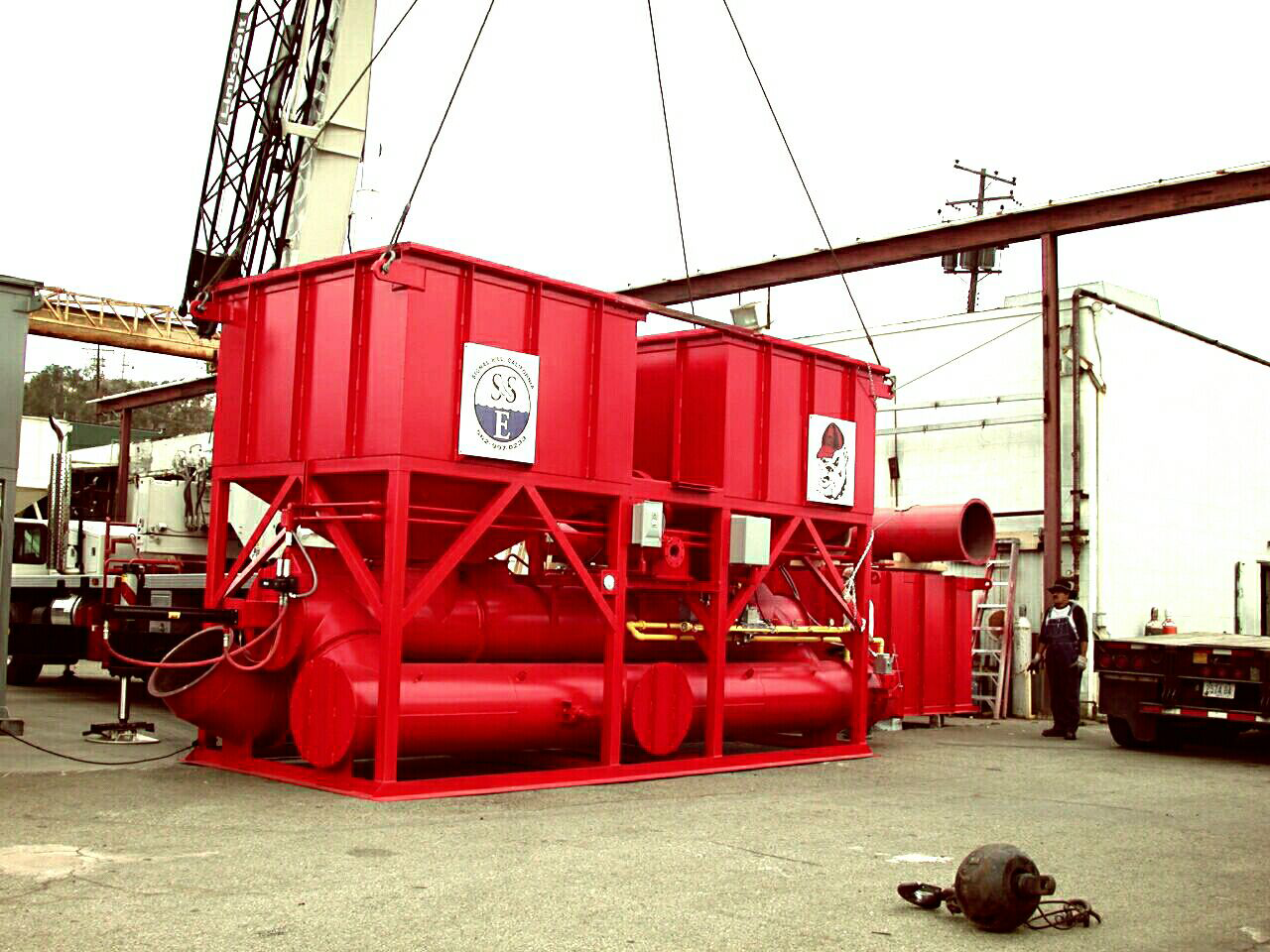
Optimizing Performance: Fuel-Selection Tips for Direct-Fired TO Units
June 13, 2025 4:54 amUnderstanding the Basics of Direct-Fired Thermal Oxidizers (TO)
Direct-fired thermal oxidizers (TO) play a crucial role in the process of air pollution control. These units are designed to destroy hazardous air pollutants (HAPs), volatile organic compounds (VOCs), and other emissions via combustion. The effectiveness of direct-fired TO units depends on various factors, with fuel selection being one of the most critical. Proper fuel selection can significantly influence the efficiency, performance, and operating cost of these units. Hence, it’s imperative to be well-versed with the best fuel-selection tips for direct-fired TO units.
Exploring the Significance of Fuel Selection in Direct-Fired TO Units
Fuel selection is a pivotal aspect of operating direct-fired thermal oxidizers. The type of fuel chosen impacts not only the combustion efficiency but also the operational costs and environmental footprint of the TO units. Different fuels offer distinct advantages and challenges, from cost implications to availability and environmental considerations. Understanding these nuances ensures that we can make informed choices that align with our operational goals and sustainability targets.
Overview of “Fuel-Selection Tips for Direct-Fired TO Units”
In the realm of thermal oxidizers, having a comprehensive grasp of fuel-selection tips for direct-fired TO units is indispensable. This section is aimed at providing an overview of the various types of fuels that can be relied upon and weighing their impacts on the performance and operational efficacy of these units. We’ll delve deeply into these aspects as we proceed, aiding you in making the most informed and beneficial fuel choices for your direct-fired TO units.
Delving Into the Different Types of Fuels for TO Units
Choosing the right fuel for direct-fired Thermal Oxidizers (TO) is crucial for optimal performance. At Ship & Shore Environmental, Inc., we’ve identified several types of fuels that can be used, each with its unique advantages and disadvantages. Natural gas, propane, and fuel oil are some of the most common choices. Natural gas is often preferred for its cost-effectiveness and cleaner burn. Propane offers ease of storage and higher combustion temperatures, while fuel oil is sometimes chosen for specific industrial applications despite its higher pollutant potential.
Moreover, alternative fuels such as biogas and waste-derived fuels are gaining traction. These options are environmentally friendly and can help reduce operating costs. However, their variability in composition and energy content requires careful consideration.
Analyzing the Impact of Fuel Choice on the Performance and Efficiency of Direct-Fired TO Units
The choice of fuel directly influences the efficiency and performance of direct-fired TO units. For example, natural gas, with its high calorific value and low particulate matter, ensures efficient combustion, leading to reduced maintenance needs and longer equipment lifespan. Propane, while slightly more expensive, provides higher BTU content per unit, rendering it more efficient for certain high-demand scenarios.
However, it’s not just about efficiency. Fuel selection impacts the environmental footprint of the TO units. Natural gas emits fewer greenhouse gases compared to fuel oil. Thus, choosing a cleaner fuel aligns with regulatory requirements and sustainability goals. Moreover, by selecting the right fuel, we can achieve superior temperature control within the TO unit, enhancing its capacity to meet stringent emission standards.
Detailed Insights on Fuel-selection tips for direct-fired TO units
To optimize our direct-fired TO units, it’s essential to consider several factors in fuel selection. Here’s a list of actionable fuel-selection tips for direct-fired TO units:
- Assess Fuel Availability: Ensure a consistent and reliable supply of the chosen fuel to avoid operational disruptions.
- Evaluate Cost-Effectiveness: Consider both the initial fuel cost and the long-term operational expenses associated with each fuel type.
- Analyze Energy Content: Fuels with higher energy content per unit will provide more efficient combustion and lower consumption rates.
- Consider Environmental Impact: Opt for fuels with fewer emissions to comply with environmental regulations and reduce carbon footprint.
- Review Safety Considerations: Some fuels may pose higher safety risks and require special handling and storage protocols.
- Account for Maintenance Requirements: Different fuels might necessitate varying levels of maintenance; choose one that aligns with your operational capabilities.
- Factor in Equipment Compatibility: Ensure that the TO unit is compatible with the chosen fuel to prevent damage and inefficiencies.
Incorporating these tips will help us make informed decisions that balance cost, efficiency, and environmental responsibility. Additionally, maintaining an ongoing assessment of fuel performance can help us adapt to changing conditions and emerging technologies. This proactive approach ensures that our direct-fired TO units continue to operate at peak performance.
By meticulously considering these factors, we are better positioned to select fuels that not only enhance the effectiveness of our direct-fired TO units but also contribute to our overarching environmental and operational goals.
Did you know? The choice of fuel in direct-fired thermal oxidizers greatly impacts efficiency and performance, influencing the unit’s pollutant breakdown efficacy and operational costs.
Bringing It All Together: Optimal Fuel Selection Tips
As we explore the best fuel-selection tips for direct-fired TO units, it’s evident just how pivotal our choices are in driving efficiency and performance. Selecting the right fuel for our thermal oxidizer can significantly impact operational costs, emissions, and overall system effectiveness.
Positive Implications of Proper Fuel Selection
When we take the time to meticulously evaluate our fuel options, we set ourselves up for success on multiple fronts. First, the right fuel can enhance the operational efficiency of our direct-fired TO units, translating to better energy utilization and reduced operating costs. This is particularly important in today’s landscape where optimizing energy consumption is not just a cost-saving measure, but also a key sustainability goal.
Moreover, appropriate fuel selection directly influences the environmental footprint of our operations. Cleaner-burning fuels lead to lower emissions of pollutants and greenhouse gases, aligning our processes with regulatory standards and corporate sustainability objectives. This not only minimizes environmental impact but also protects us from potential compliance issues and associated penalties.
Our Commitment to Optimal Performance
Our journey towards optimal performance with direct-fired TO units hinges on making informed and strategic fuel choices. We’ve explored various aspects of fuel selection, from understanding the types of fuels available to analyzing their specific impacts on our system. By adhering to the best fuel-selection tips for direct-fired TO units, we empower our operations to be both effective and environmentally responsible.
It’s essential that we continually re-assess our fuel options as technology evolves and new fuels enter the market. Staying abreast of these changes ensures that we can make the best decisions for our thermal oxidizers’ performance, efficiency, and environmental compliance.
In conclusion, our commitment to optimizing fuel selection is a pivotal component of maintaining high-performing, cost-effective, and environmentally friendly thermal oxidizers. As we integrate these best practices into our operations, we pave the way for sustainable success and operational excellence.
FAQ
What factors should be considered when selecting a fuel for a direct-fired thermal oxidizer?
When selecting a fuel for a thermal oxidizer, it’s crucial to consider factors such as the fuel’s energy content, availability, cost, and the potential impact on emissions and overall system efficiency. Additionally, we must evaluate compatibility with the existing equipment configuration and any specific process requirements. Consequently, our selection should support not only today’s needs but also anticipate future regulatory trends and sustainability goals.
How does fuel choice affect the operational costs of a direct-fired TO unit?
Fuel choice can significantly influence the operational costs of a direct-fired TO unit. For instance, fuels with higher energy content may offer greater efficiency, leading to lower consumption rates and reduced fuel expenses over time. However, it’s important to balance this against the initial cost of the fuel, as well as the potential need for system modifications or upgrades. Effective fuel selection can be a decision that positively impacts both immediate and long-term operational budgets.
Can the type of fuel used in a TO unit have environmental implications?
Absolutely, the type of fuel utilized in a TO unit has direct environmental implications. Cleaner-burning fuels can significantly decrease the output of harmful pollutants and greenhouse gases, bolstering our commitment to regulatory compliance and environmental stewardship. Therefore, it’s imperative that we carefully consider the emissions profile of potential fuels in alignment with our sustainability objectives and societal responsibilities.
Why is it important to continually re-assess fuel options for thermal oxidizers?
The landscape of industrial fuels is dynamic, with ongoing advancements in fuel technology and shifts in market availability. Continual reassessment allows us to leverage new, more efficient, or environmentally friendly fuel alternatives as they emerge. Moreover, by staying informed about the evolving energy market, we can ensure that our operations remain competitive, sustainable, and in compliance with tightening regulations.
How do we ensure that our fuel selection aligns with corporate sustainability goals?
To ensure our fuel selection is in line with our corporate sustainability goals, we must thoroughly evaluate the environmental impact of each fuel type. This entails analyzing the lifecycle emissions of potential fuels and assessing how their use will contribute to our carbon footprint. Moreover, our approach should consider the broader implications of our fuel choices on community health and the natural environment, reinforcing our role as a forward-thinking and responsible operator.
Categorised in: Blog

